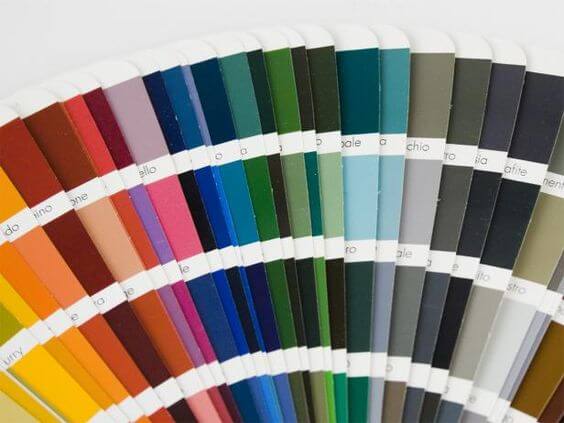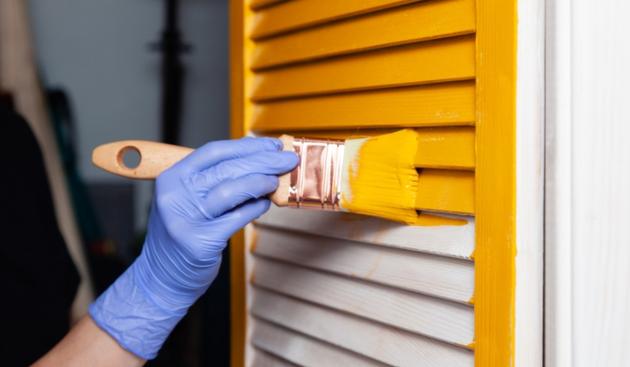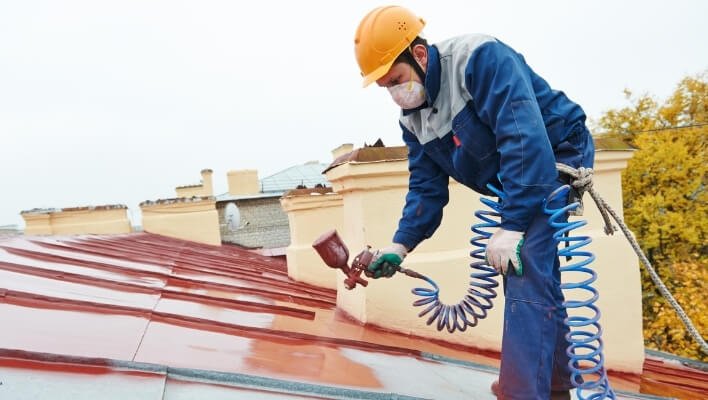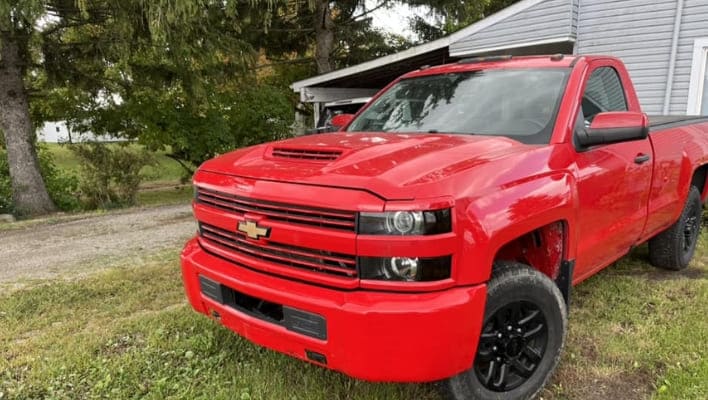Painting your home is a breathtaking approach to revamping your bedroom, home, office, or business. Besides painting, there are some important concepts that are necessary to understand. In general, paints use a similar amount of pigments and solvents, but they affect the overall appearance. In short, you need to understand the difference between interior and exterior paint.
Remember that a single change in the paint ingredient changes the properties of paint. All the paints have their unique properties and are made to serve different purposes. For instance, interior paints resist staining, but exterior paints are made to fight with mildew and fading. The knowledge of both types is important to prevent any investment. Stay with our blog to learn about the chemistry of paints.

Table of Contents
- What Is Paint and Its Main Ingredients?
- What is interior paint used for?
- What is exterior paint used for?
- Comparison Chart of Exterior Paint vs Interior Paint
- what is the difference between interior and exterior paint
- Use of Pigments
- Resistance Against Weather
- Binding Resins
- Additives
- VOC Level
- Dry Time
- Scratches and Scuffing
- Interior vs Exterior Paint Cost
- Can I Use Interior Paint For The Exterior?
- Can You Paint The Exterior and Interior The Same Color?
- Is There A Difference Between Interior and Exterior Paint Primer?
- What Is The Difference Between Interior and Exterior Enamel Paint?
- How To Make Interior Paint Into Exterior Paint?
- Can You Mix Interior and Exterior Paint?
- FAQs On interior vs exterior paint
- Is it OK to paint interior walls with exterior paint?
- What happens if I accidentally used exterior paint inside?
- Is exterior paint more durable than interior?
- Is interior and exterior paint the same?
- Final Verdict On Difference Between Interior and Exterior Paint
What Is Paint and Its Main Ingredients?

Paint is a colorful compound that is applied on different surfaces. When it tries, it leaves a thick layer behind and serves as a protective and decorative coating. They are prepared with a mixture of different substances such as solvents, pigments, resins, and additives. Most of them are oil-based, or others are water-based paints. Here the water and oil serve the purpose of solvent and keep it wet while applying it to the surface.
After application, it dries and leaves behind a thin/thick layer of pigment, resin, or additive. Particularly, a pigment is responsible for the color of the paint. Likewise, resins help make a significant force to stick with the surface for longer. In the end, the additives serve specific purposes, such as mold and mildew protection. They also make the application easier and quicker besides the tool you are using.
It is noted to be here that in exterior interior painting, the components have similar properties. The only difference is of additives and the survival of paints in different environmental circumstances. Usually, water-based paints are recommended for interior painting because they don’t have to bear the sunlight and are easy to clean. On the other hand, exterior paints are oil-based, making the grip stronger and hard to clean up.

What is interior paint used for?
Before differentiating interior and exterior paints, it’s important to know the chemical properties individually. Interior paints are used to revamp your home interior, such as rooms, lounge, bedrooms, kitchen, etc. The most important application of interior paints is that they are primarily used for aesthetics and home decoration. Correspondingly, you get a few other benefits with them, such as easy maintenance, wash ability, and dampness prevention.
They are prepared in such a way to withstand abrasion and are more graceful than exterior paints. Not to mention, you can scrub them easily, and they resist staining. Nevertheless, they don’t deal with harmful UV radiation or sunlight. No fade-resistant ability is found in interior paints.
Furthermore, you can apply them with brushes, rollers, or sprayers, which are washable. Helpful for removing the spots left by the children or pets. They require minimal zero volatile organic compounds to prevent severe health risks. You can apply interior paint with the suitable indoor sprayers.
What is exterior paint used for?
Exterior paints are used to paint the outer surface of the home or building. Uncovered for all weather conditions and help protect from mildew and mold. They also have the ability to fight harmful UV radiations.
Nowadays, the fungus is the biggest problem, and exterior paints reduce the fungus growth. They are fade-resistant and withstand against high-temperature conditions. Resins are used in exterior paints to make them flexible and soft. They don’t crack easily and are applicable to various surfaces. They absorb a particular amount of water when rain falls on the walls. They contain high VOCs and are not recommended for use inside the house.
Comparison Chart of Exterior Paint vs Interior Paint
| Factors | Exterior Paint | Interior Paint |
| Additives | High amount | Minimal amount of additives |
| Binding resin | Acrylic | Silicon, Epoxy |
| VOC level | Moderate to high | Low to none |
| Durability | High | Moderate |
| Adhesion | Best | Good |
| Resistance to fade | It resists fading in the sun | None |
| UV protection | Yes | No |
| Resistance to scratches | Yes | Yes |
| Resistance to temperature | High | Low |
| Cleanliness | Spray cleans well | Easy to scrub |
| Dry time | Quickly dry | Slow drying time |
| Weatherproofing | Weatherproof | None |
| Paint Cost | Expensive | Affordable |
what is the difference between interior and exterior paint
According to Mark Savino, a remodeling advisor at YouthfulHome, an online resource for home improvement contractors, paint has four parts: solvents, pigment, additive and resin.
We have mentioned the main differences between interior and exterior paints in the following:
Use of Pigments
Recall that pigments are used to give the paint a specific color. Only a significant amount of organic pigments are used in interior paints. You will not feel any bad odor, and can even breathe in the room just after painting.
On the other hand, exterior paints are durable but have a high amount of chemicals. The manufacturers also add non-organic compounds to increase their strength. Therefore, they emit intense fumes and a bad odor. The pigment doesn’t fade quickly, but it might be harmful to breathe in the fumes.
Useful Resource: Is it good or bad to use base paint without tint. Read more!
Resistance Against Weather
Interior paints are used for painting bedrooms and all indoor surfaces. Therefore, they don’t offer resistance to harsh weather conditions. Overall, they have low water-resistance, low moisture-resistance, low temperature-resistance, and low fade-resistance when open to sunlight.
However, exterior paints are specially made to bear the problematic weather. They offer high temperature-resistance, moisture, mildew, and mold resistance.
Binding Resins
Binding resins determine the adhesive force of the paint means how much time it will stick to the surface forcefully. Interior paints use ordinary binding resins and have lower sticking power.
Besides, acrylic binding resins are highly effective and used by almost all types of exterior paints. They offer high adhesive force with the applied surface. These are highly durable but emit toxic fumes and a foul smell.
Additives
Interior paints do not have to interact with hard weather and sunlight; therefore, the brands add a minimal amount of additives. Therefore, the resistance against temperature, moisture, rain, mildew, and mold is less for interior paints.
Instead, exterior paints consist of a high amount of additives to make the paint fade-resistant, prevent cracking and handle high temperatures. They also have greater strength to fight mildew, algae, fungus, and mold.
VOC Level
VOC’s are responsible for emitting toxic fumes. They might be dangerous if you breathe longer in the fumes. Fortunately, interior paints have a very low amount of VOCs.
On the contrary, exterior paints have a higher amount of VOCs and release toxic fumes. Therefore, avoid breading near exterior paints; otherwise, your health might be at risk.
Dry Time
It’s a fact that water-based paints take little time to dry than exterior paints. However, the ventilation and blowing air also affect the dry time. Usually, exterior paints have a quick dry time due to constant airflow. Heat also helps to dry the paint fast. In opposition, interior paints do not dry quickly due to limited airflow and many other factors.
Scratches and Scuffing
In comparison, the scratch and scuffing resistance is similar for both interior and exterior paints. However, exterior paints are more durable than interior ones. They can resist hard weather conditions, scratching, and scuffing easily due to the high amount of additives.
Interior vs Exterior Paint Cost
Paint Cost is also a crucial factor to consider. Most exterior paints are oil-based, and the cost increases due to the usage of oil. They have more additives, chemicals, and binding resins, increasing the overall cost. In comparison, interior paint is highly affordable and easily applicable.
Can I Use Interior Paint For The Exterior?
No, it’s not recommended to use interior paints for the exterior. There are many crucial reasons behind it. Interior paints can’t bear the high moisture, temperature, and have a low resistance to mold and mildew. Therefore, it’s always recommended to use exterior paints outside the home.
Can You Paint The Exterior and Interior The Same Color?
Remember that the colors have depict the appearance of your home. Shortly, you always have to make a contrast between colors. It is not suggested to use the same color for interior and exterior. Make a beautiful contrast of different colors to give your home a wonderful appearance.
Is There A Difference Between Interior and Exterior Paint Primer?
Yes, there is a great difference between interior and exterior paint primer. The primer used for the interior increases the adhesion and makes the surface flat for uniform painting. However, exterior paints are used to reduce cracking, preventing mildew growth and fungus. Also, the formulas of both interior and exterior primers are different.
What Is The Difference Between Interior and Exterior Enamel Paint?
The difference between the interior and exterior paint enamel is the end results. Interior enamel paint is made for scrubbing, allowing easy cleaning, maintenance, and resist staining. On the contrary, exterior enamel paints offer resistance against mildew, fading, high temperatures, rain, and other difficult weather conditions.
How To Make Interior Paint Into Exterior Paint?
Suppose you are doing interior and have enough quantity to use outside of your home. No one wants to invest more in such a situation. Don’t worry! You can make interior paint into exterior paint within a few steps. Take little amount (a few ounces) of polycrylic, m-1 mildew additive, and mix them. You can use this quantity in 1 gallon of interior paint. Congrats! The interior paints has been converted into exterior paint.
Can You Mix Interior and Exterior Paint?
Yes, you can make a mixture of interior and exterior paint if necessary. As you know exterior paint consists of higher amount of VOCs and other paint ingredients. When you mix, you will get a homogenous mixture with medium-level components such as additives, binding resins, etc.
FAQs On interior vs exterior paint
Is it OK to paint interior walls with exterior paint?
No, it is not good to paint your home interior with exterior paint. Professionals don’t recommend it because they have a high level of VOCs, and your health might be at risk. They are difficult to clean and do not give uniform paint finish.
What happens if I accidentally used exterior paint inside?
If you have used exterior paint for the interior, you have to take some safety measures. Don’t sleep or stay in the area of exterior paint because it releases toxic fumes. Also, wait for the paint to dry completely.
Is exterior paint more durable than interior?
Definitely, exterior paints are highly durable than interior paints because of many reasons. They have a high amount of additives, resins, and pigments. They are capable of dealing with high temperatures, high resistance, water interactions, and many hard weather conditions.
Is interior and exterior paint the same?
No, interior and exterior paints are not the same. The major differences include the amount of additives, binding resins, pigments. Interior paints are made to resist staining, easily washable, and quick to maintain. However, exterior paints are made to combat against damaging weather conditions.
Final Verdict On Difference Between Interior and Exterior Paint
In conclusion, we have shared all the details, specific formulation, application, and necessary details of interior and exterior paints. Now, it’s easy to choose which paint you have to apply according to your painting project. Enjoy painting your home interior or exterior by following the detailed mentioned above.

Jennifer Marie
Jennifer Marie is a general contractor with over the years of experience in home remodeling, DIY projects, and commercial painting projects. Her experience includes working with paint sprayers, painting tools, and other painting supplies. You can follow her on Facebook.


